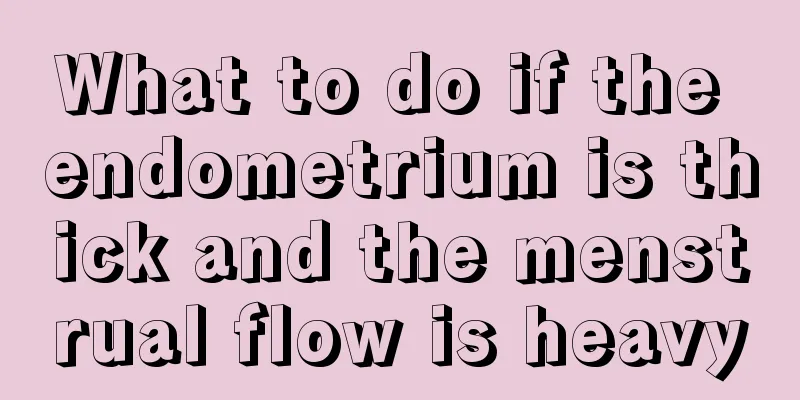What are the dangers of female adnexal cysts?

|
Adnexal cysts are a relatively common gynecological disease. They can cause a lot of harm to women's bodies and often cause irregular menstruation. If they are not effectively treated for a long time, they may also cause female infertility or even the possibility of cancer. Therefore, they must be taken seriously. Let us understand some of the adverse effects caused by adnexal cysts in women. 1. Dysmenorrhea: Those who did not have dysmenorrhea before begin to have dysmenorrhea or the dysmenorrhea continues to worsen. 2. Menstrual disorders: The previously regular menstruation becomes completely irregular, often making you panic. 3. Infertility: Ovarian cysts are one of the causes of infertility. This has no direct relationship with the size of the cyst, and the reason remains to be determined. Ovarian cyst causes: 1. Stagnation of Qi and blood. Exposure to cold during menstruation or after childbirth causes blood stasis due to cold. Or it may be caused by internal injury of emotions, depression that damages the liver, poor qi movement, stagnation of qi and blood, and stagnation of qi and blood. If blood stasis persists for a long time, it may turn into cancer. 2. Phlegm and blood stasis condense. Worry and worry damage the spleen, spleen deficiency produces phlegm, phlegm and fluid stagnate and block the Qi flow, causing Qi stagnation and blood stasis, and phlegm and fluid combine with blood stasis to form lumps. Long-term accumulation of phlegm and blood stasis can lead to cancer. Symptoms of ovarian cysts Clinically, ovarian cysts often present with lower abdominal pain, lower abdominal discomfort, increased vaginal discharge, yellow vaginal discharge, abnormal vaginal odor, menstrual irregularities, and usually a solid and painless mass in the lower abdomen, and sometimes pain during sexual intercourse. When cysts interfere with hormone production, symptoms such as irregular vaginal bleeding or increased hair growth may occur. If the cyst twists, there will be severe abdominal pain, abdominal distension, difficulty breathing, decreased appetite, nausea and fever. Larger cysts can put pressure on the area near the bladder, causing frequent urination and difficulty urinating. Especially when these symptoms are severe, bleeding is frequent and occur at the same time, women are more likely to develop ovarian cysts and the risk of malignant ovarian cancer is greater. Diagnosis and examination of ovarian cysts: Color B-ultrasound, X-ray examination, laparoscopy and other advanced diagnostic techniques can diagnose ovarian cysts at an early stage. The most common ovarian cyst in women of childbearing age is functional ovarian cyst, which is caused by excessive physiological response of the ovary itself or drug stimulation. Patients generally do not feel any feeling or discomfort. A few may have menstrual disorders, which are often discovered accidentally during medical examinations for other reasons. Functional ovarian cysts are mostly less than 5 cm in diameter and can disappear naturally, generally without the need for treatment. Another common cause of ovarian cysts is ovarian tumors, which can occur at any age but are more common in women of childbearing age. It is a common gynecological tumor, accounting for about one-third of female reproductive system tumors. The mortality rate of ovarian malignant tumors ranks first among gynecological malignancies and is the most threatening disease among gynecological tumors. The cause of ovarian tumors is unknown. Like functional ovarian cysts, early patients have no symptoms and are often discovered accidentally during physical examinations. If the tumor pedicle twists or ruptures, sudden lower abdominal pain will occur. Ovarian cysts are benign tumors in most cases, but if they are not treated for a long time, especially when exposed to certain stimuli, they are likely to become cancerous. Therefore, once an ovarian cyst is discovered, it is best to use some more effective methods to treat it as soon as possible to minimize the damage to the female body. |
<<: What is the cause of cervical cyst?
>>: What are the symptoms of multiple breast cysts?
Recommend
The National Health Commission has issued a guideline for the diagnosis and treatment of monkeypox. Monkeypox virus can be inactivated by doing this
Xinhua News Agency, Beijing, June 15 (Reporters X...
How long does it take for a woman’s menstrual period to end?
Postpartum menstruation is a more vivid descripti...
Why does hydatidiform mole occur?
Pregnancy is a very happy thing, but some people ...
Does menstruation reduce immunity?
Generally speaking, women's immunity is relat...
Fifteen pieces of advice for people with diabetes
Diabetes is a common chronic disease that serious...
How to treat coccidioidomycosis
Many women may not know what are the clinical man...
What should be checked before removing the ring? Check carefully before removing the ring
Before removing the IUD, you need to prepare well...
Menstruation is delayed for a week and the pregnancy test stick is dark and light
Generally, women's menstrual cycle is about 2...
Pregnant woman with numb hands at night
After becoming pregnant, a woman's body will ...
What to eat to treat a woman's cold stomach
In the new era, many female friends pursue fashio...
What is the pink discharge during ovulation?
Although the ovulation period is a very common ph...
Female fingers numb when sleeping at night
If your hands feel numb when you fall asleep, you...
Can women drink red wine while taking Chinese medicine?
The medicinal effects of Chinese medicine on the ...
The story of two elders: preventing osteoporosis
In the cold winter in the north, the elderly go o...
【Smart Farmers】Food Talk: A Picture to Understand Misunderstood Food Additives
[Smart Farmers][Food Talk] A picture to understan...









